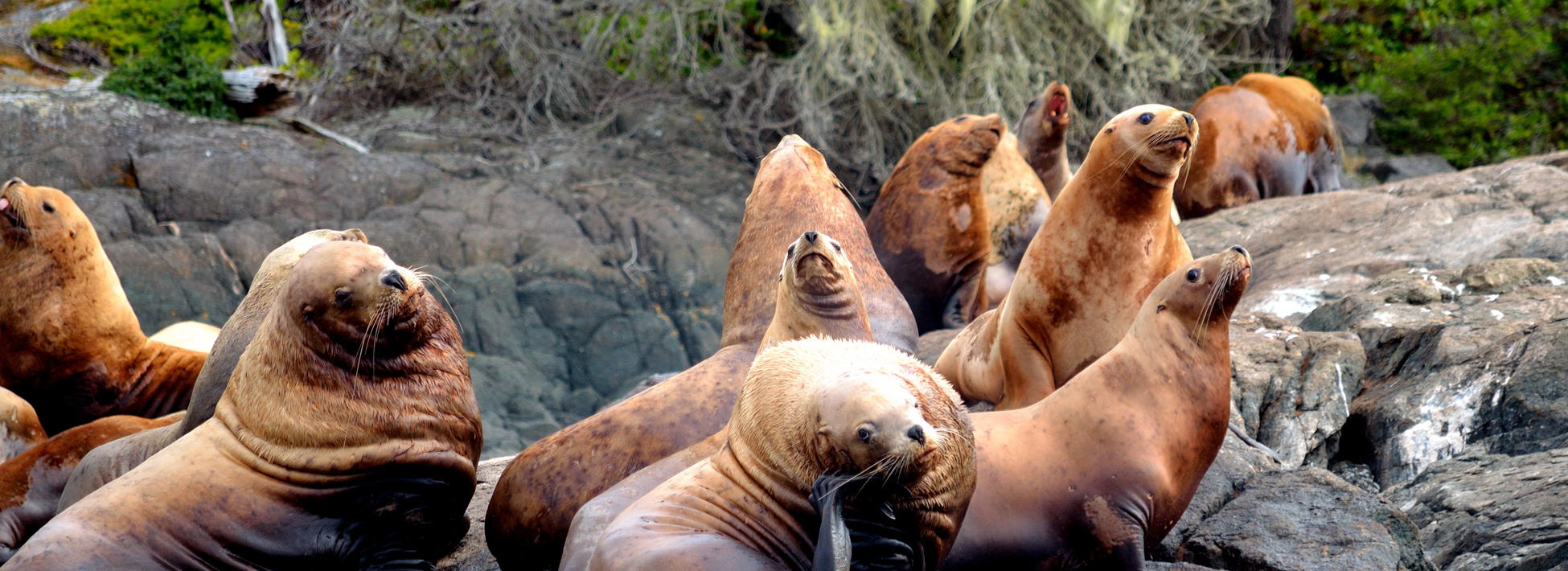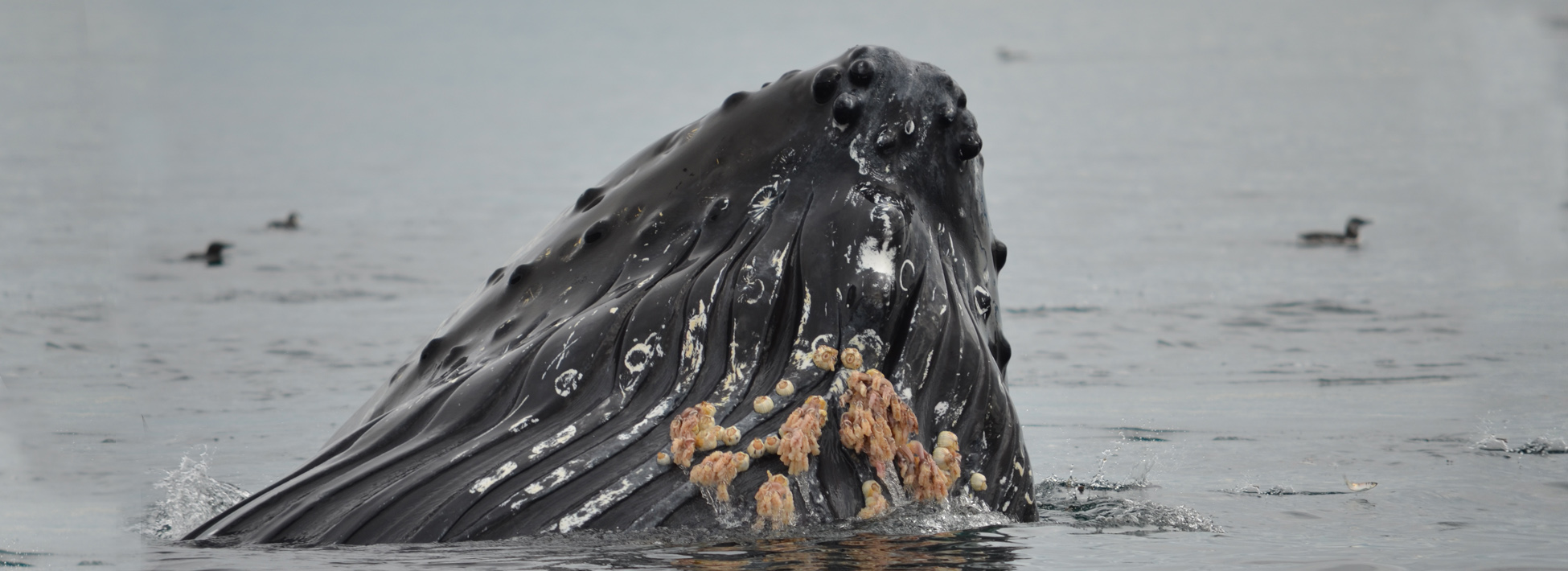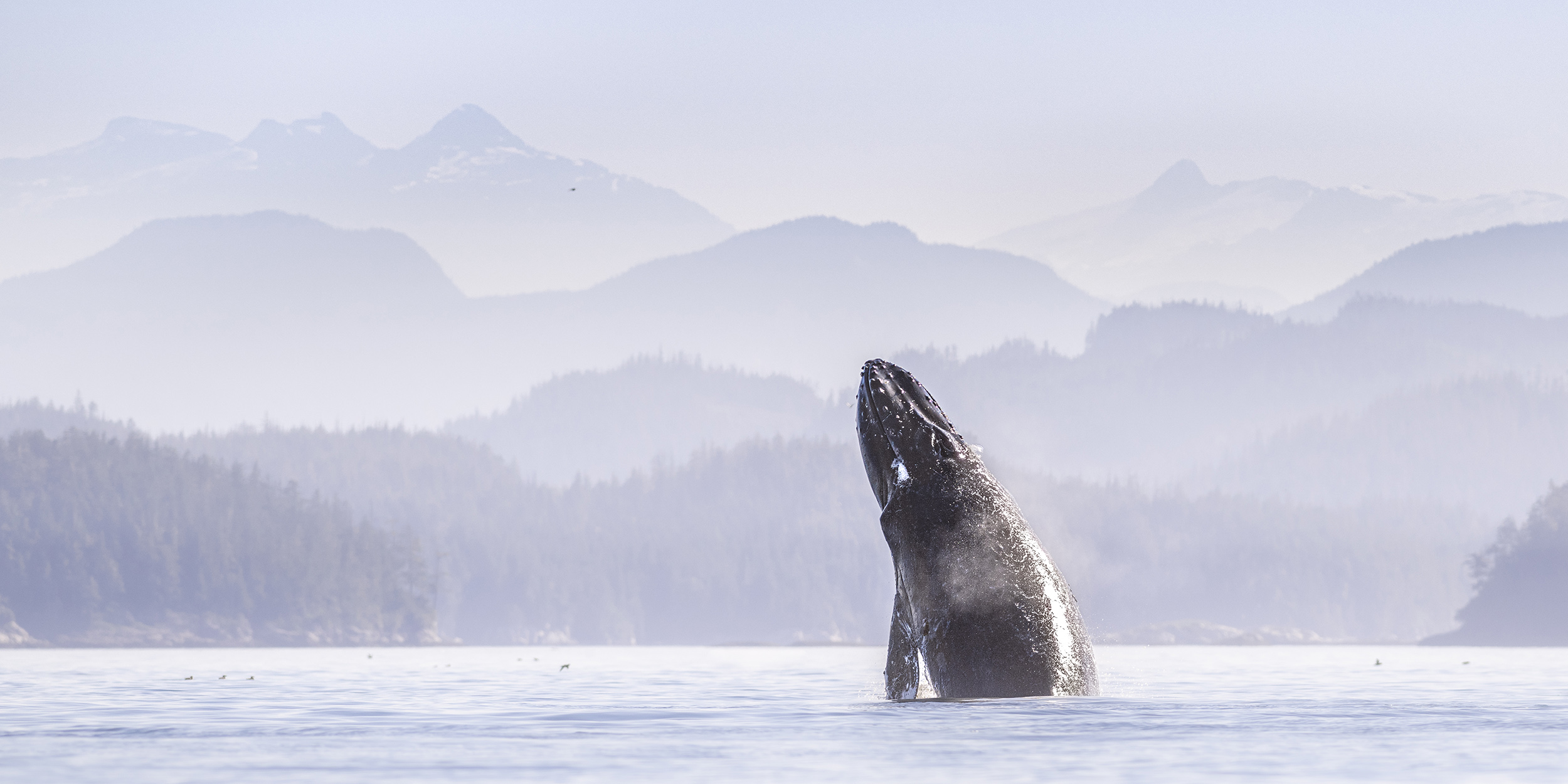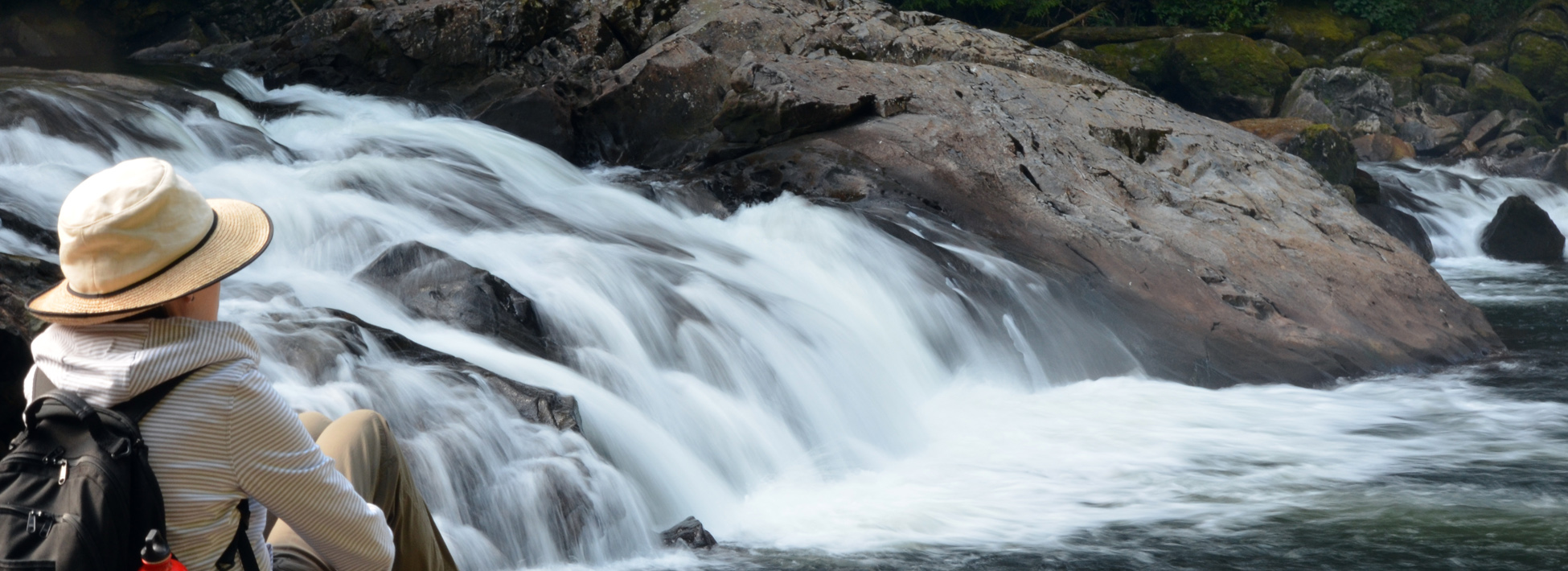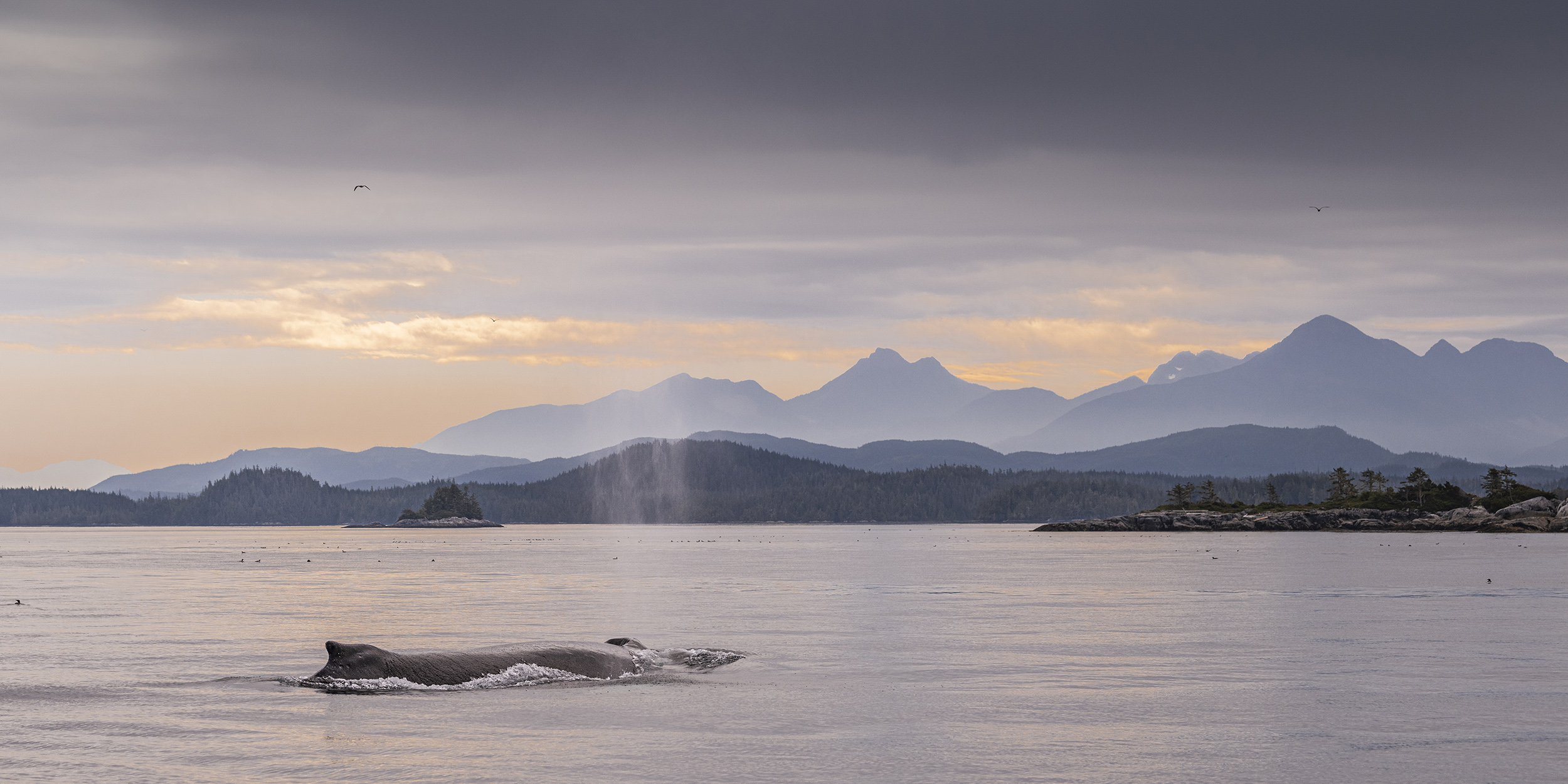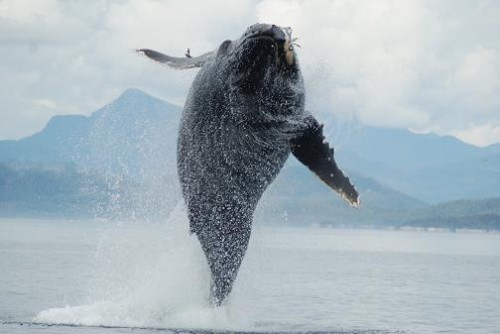
The interesting aspect of this photo is that it was caught in a photo. A breaching humpback whale is reasonably common but catching it on film is not. Humpback activities such as tail lobbing (slapping), pectoral fin slapping, and lunge feeding are easier to photograph as they are repeated and therefore predictable. A breach is without warning and seldom repeated.
